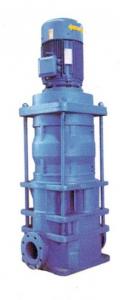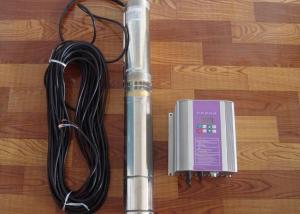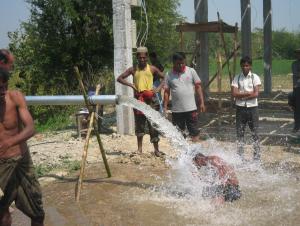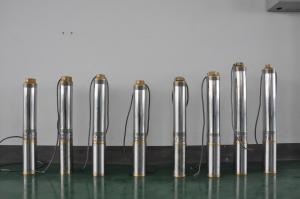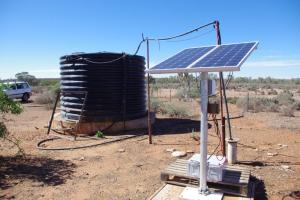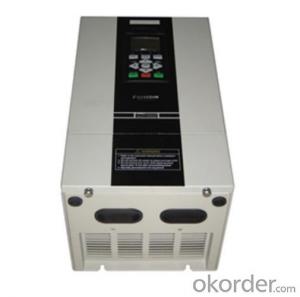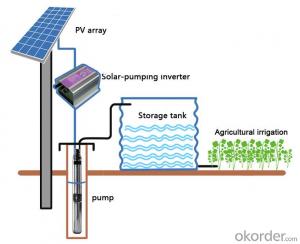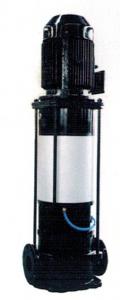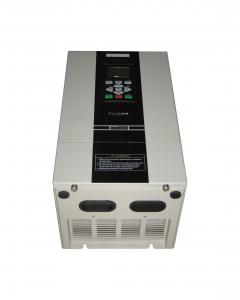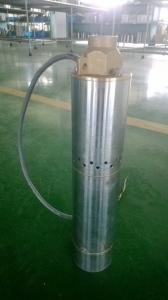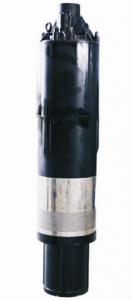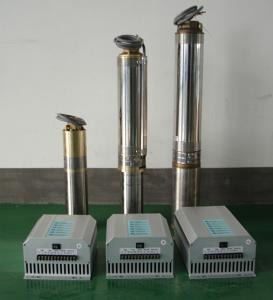Pumplus Solar Pump L3D-24-300 Solar Water Pump
- Loading Port:
- China Main Port
- Payment Terms:
- TT OR LC
- Min Order Qty:
- -
- Supply Capability:
- 300 sets set/month
OKorder Service Pledge
OKorder Financial Service
You Might Also Like
Product description:
Product: Solar water pump
Model:L3D-24-300
Appilication:
surface pump
for surface water of pond, river, lake
for irrigation of a big farm with 15000 m2 on the top of a high mountain
Product specification:
flow rate:24m3/ hour, 300m3/day.
lift: 10m-300m
pump diameter: 610mm
Pump installed on the ground, outlet to the water surface:4m
with AC motor, motor power:22kW
but only need solar power:24kW(while Grundfos pump needs at least 45kW solar power, our pump can save more than 50% solar panel power,save USD15000 cost for solar panel per set.
Material:
Pump inside: stainless steel and wearable nylon,it enables our solar pump to have 10 years sevice life.
Motor : AC motor, 380V , three phase , 50Hz. The pump also can connect with grid power directly.
Certification:
3 International patent
ISO9001
CE
Warranty:2 years
- Q: Can a solar pump be used in off-grid homes?
- Yes, a solar pump can be used in off-grid homes. Solar pumps are an excellent option for off-grid living as they rely on solar energy to operate, eliminating the need for grid electricity. They can be used to pump water for various purposes such as irrigation, drinking water, or livestock. Solar pumps are cost-effective, environmentally friendly, and provide a reliable source of water in remote areas where access to electricity is limited or unavailable.
- Q: Are there any grants or funding options available for installing a solar pump?
- Grants and funding options are indeed accessible for the installation of solar pumps. The availability and eligibility criteria of these grants and funding options may vary depending on your location and specific circumstances. One primary source of funding is government programs and initiatives. Numerous governments offer financial incentives, such as grants, rebates, or tax credits, to promote the adoption of renewable energy technologies like solar pumps. These incentives aim to reduce the initial investment cost and make solar pump installations more affordable for individuals, businesses, or communities. Moreover, non-profit organizations, foundations, and environmental agencies may also provide grants or funding for renewable energy projects, including solar pump installations. These organizations typically prioritize projects that align with their mission and contribute to sustainable development or environmental conservation. To inquire about available grants or funding options for solar pumps, it is recommended to research and contact local government agencies, energy departments, or environmental organizations in your area. They can provide specific information on eligibility criteria, application processes, and deadlines. Furthermore, financial institutions, such as banks or credit unions, may offer loans or financing options specifically for renewable energy projects. These loans can assist in covering the upfront costs of purchasing and installing a solar pump, offering flexible repayment terms and competitive interest rates. In conclusion, while the specific grants and funding options available may differ based on your location and circumstances, there are various opportunities to access financial support for installing a solar pump. It is advisable to explore and consider multiple avenues to maximize potential funding options and make your solar pump installation more affordable.
- Q: How does the size of the solar pump controller affect its performance?
- The size of a solar pump controller can have a significant impact on its performance. The size refers to the capacity or power output of the controller, which is usually measured in watts. A larger solar pump controller with a higher power output can handle larger loads and can therefore support more powerful pumps. This means that a larger controller can handle higher flow rates and lift heights, allowing for more efficient water pumping. It can also support larger solar panels, which can generate more electricity and recharge the batteries faster. On the other hand, a smaller solar pump controller with a lower power output may not be able to handle high flow rates or lift heights. It may struggle to power larger pumps, leading to reduced performance and efficiency. Additionally, a smaller controller may have limited compatibility with solar panels, resulting in slower battery charging and reduced overall performance. Therefore, choosing the right size solar pump controller is crucial to ensure optimal performance. It is important to consider the required flow rate, lift height, and the power requirements of the pump. By selecting a controller with a suitable size, one can maximize the efficiency and effectiveness of the solar pumping system.
- Q: Can a solar pump be used for agricultural irrigation?
- Yes, a solar pump can be used for agricultural irrigation. Solar-powered pumps utilize energy from the sun to power the pump, making them an environmentally friendly and cost-effective option for irrigation in remote areas. They can provide a reliable water source for crops, ensuring efficient irrigation practices and sustainable agriculture.
- Q: Is it possible to use a solar pump in areas with high water tables?
- Yes, it is possible to use a solar pump in areas with high water tables. Solar pumps are designed to draw water from underground sources such as wells, boreholes, or even directly from high water tables. The efficiency and effectiveness of the solar pump may vary depending on the specific conditions and the size and capacity of the pump, but in general, solar pumps can be successfully used in areas with high water tables to provide a cost-effective and sustainable solution for water pumping needs.
- Q: Can a solar pump be used in areas prone to lightning strikes?
- Yes, a solar pump can be used in areas prone to lightning strikes. Solar pumps are generally safe to use during lightning storms because they operate on low voltage and do not rely on grid power. However, it is still recommended to use surge protectors and grounding systems to minimize the risk of damage from lightning strikes.
- Q: How do I calculate the required solar panel capacity for a solar pump system?
- To calculate the required solar panel capacity for a solar pump system, you need to consider the power requirements of the pump, the average sunlight hours in your location, and any additional energy losses. Firstly, determine the power consumption of the pump in watts. Then, calculate the daily energy requirement by multiplying the pump's power consumption by the number of hours it operates daily. Next, divide this daily energy requirement by the average sunlight hours to obtain the minimum solar panel capacity needed to meet the pump's demand. Finally, account for any energy losses due to factors like inefficiencies or shading to ensure you have sufficient solar panel capacity to operate the pump efficiently.
- Q: What is the maximum operating temperature for a solar pump?
- The maximum operating temperature for a solar pump typically depends on the specific model and manufacturer. However, most solar pumps can operate efficiently in temperatures ranging from -40°C to 70°C (-40°F to 158°F).
- Q: How does a solar pump help in reducing the risk of water pollution?
- A solar pump helps in reducing the risk of water pollution by eliminating the need for traditional fuel-powered pumps, which can release harmful emissions into the air and contaminate the water source. As solar pumps run on clean energy from the sun, they do not contribute to air or water pollution, thus reducing the overall risk of water pollution.
- Q: Can solar pumps be used for water supply in schools or public facilities?
- Yes, solar pumps can be effectively used for water supply in schools or public facilities. Solar pumps are a sustainable and reliable solution for providing water in areas where electricity or conventional pumps may not be readily available. They can efficiently harness solar energy to pump water from wells, boreholes, or other water sources, ensuring a consistent and cost-effective water supply for schools and public facilities. Additionally, solar pumps are environmentally friendly and require minimal maintenance, making them an ideal choice for sustainable water management in these settings.
Send your message to us
Pumplus Solar Pump L3D-24-300 Solar Water Pump
- Loading Port:
- China Main Port
- Payment Terms:
- TT OR LC
- Min Order Qty:
- -
- Supply Capability:
- 300 sets set/month
OKorder Service Pledge
OKorder Financial Service
Similar products
Hot products
Hot Searches
Related keywords
